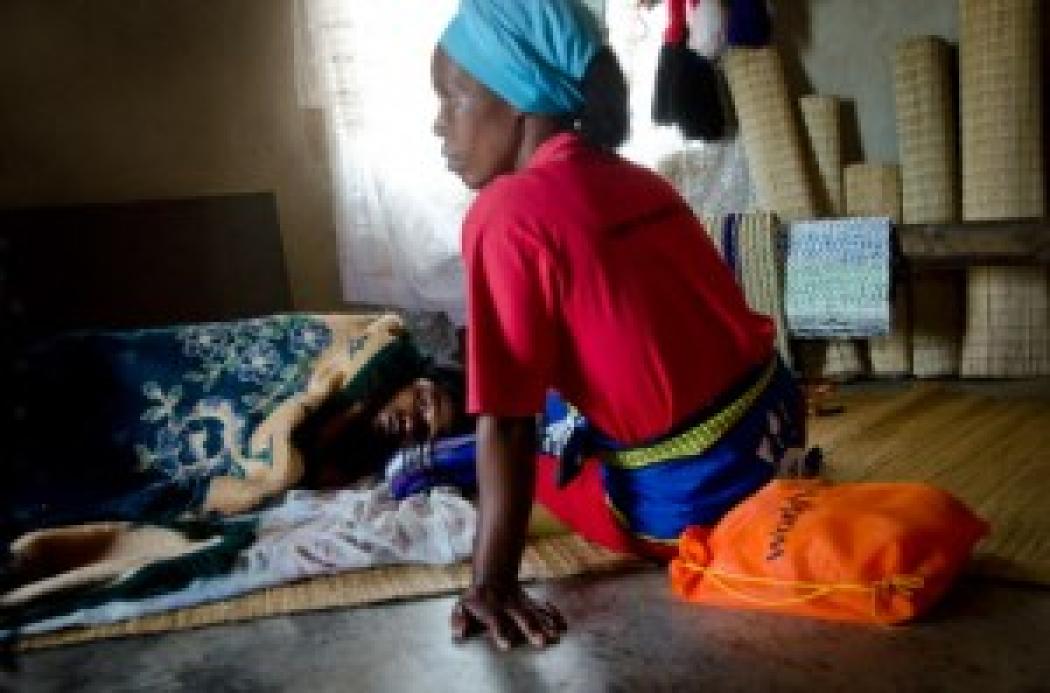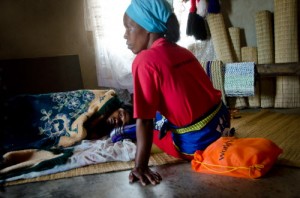On the Frontline of Achieving an AIDS-free Generation

By: Lisa Bos, World Vision
Just a few months after starting to work for World Vision, I was able to make my first trip to see our programs in action. My country of choice was Zambia, for several reasons: it’s an English-speaking country (important when the purpose of your trip is to learn from your international colleagues), it was not too far to travel (only 22 hours!), and it was the home of some of the most exciting work World Vision is doing on HIV/AIDS.
During my time in Zambia, I spent two days visiting with volunteer caregivers working in a rural community near Mazabuka, southwest of the capitol of Lusaka. These volunteers take their own time, without compensation, to care for their communities. They clean sores of those suffering from AIDS, they educate and facilitate support groups for community members who are HIV positive, they ensure that pregnant mothers are taking their medication so they don’t pass on HIV to their babies, and they visit with children orphaned by AIDS and provide counseling. The program in Zambia is part of a partnership between World Vision and USAID, through the PEPFAR program, called Sustainability Through Economic Strengthening, Prevention, and Support for Orphans and Vulnerable Children (STEPS OVC).
Community caregivers are a part of a much larger cadre worldwide of frontline health workers who are the first person (and sometimes only person) an individual will see for their health care needs. These health workers are vital in the fight against HIV and AIDS not only for the diagnosis, treatment and support they can provide in a direct way, but also because they can help diagnose tuberculosis, which kills one in five HIV-positive individuals. They can ensure that a family has a mosquito net to sleep under because the viral load of a HIV-infected person increases ten-fold during an attack of malaria.
Last year on World AIDS Day, the Obama Administration announced a bold vision for an AIDS-free generation. The blueprint for how this can be achieved was just released on November 29th. While the blueprint includes many of the necessary steps needed to achieve an AIDS-free generation, including strengthening country health systems and the health workforce, this goal will not be met without people on the frontline like Nomsa Mdluli.
Nomsa Mdluli, 46, is a caregiver for 124 ill people in her community. Most are HIV positive, some have tuberculosis, and some are suffering from mental illness. World Vision has provided Nomsa with training and supplies, and her initiative has launched her to the head of the caregiver program in her area. Now she oversees many other caregivers, which often includes taking care of their patients when they are unable to do so.
Part of Nomsa’s great skill as a caregiver is gently persuading her patients to find out their HIV status so they can treat the disease in its early stages, avoid infecting others, and prevent more severe symptoms or even death.
“I’ve had a number of patients who have gotten well, who have gotten out of bed, regained their standard of life,” Nomsa says. “I get very motivated and encouraged when someone that I’ve taken care of regains their standard of life.”
I believe that an AIDS free generation is possible, but it will take funding, dedication and a lot of hard work. It will also take Nomsa and thousands more like her.

